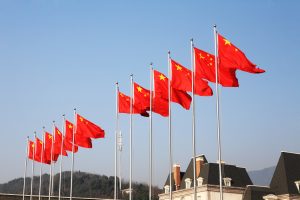The Diplomat author Mercy Kuo regularly engages subject-matter experts, policy practitioners, and strategic thinkers across the globe for their diverse insights into U.S. Asia policy. This conversation with Dr. Zeno Leoni – lecturer in the Defense Studies Department of King’s College London and author of “Grand Strategy and the Rise of China” (Agenda 2023) – is the 440th in “The Trans-Pacific View Insight Series.”
Identify the core assumptions and components of grand strategy vis-à-vis China’s rise.
To make sense of Chinese grand strategy, one has to go back to the First Opium War (1839-1842), a shock for imperial elites. On the one hand, it made them realize that suddenly, because of the English and Industrial revolutions, China had remained behind, and it needed to modernize; this meant accessing Western technology. On the other hand, as the country was thrown into the competitive, anarchic international system, Chinese elites realized that such system was dominated by the West. This means that even the most accommodating views in China are informed by a skepticism toward the international system.
It is this catch-22 – modernizing like the West, while fearing it – that continues to inform Chinese grand strategy. To make an example, this can explain China’s ambiguous position on the Russo-Ukrainian War. Beijing did not want Russia to invade Ukraine, for the instability that this would have caused; yet it could not side with the West, as this would have not eased by an inch the pressure from the U.S. and its allies.
Examine the effectiveness of China’s efforts to reconfigure the rules-based international order.
China has been effective in driving a decentralization of power inside multilateral institutions, limiting the leverage of the U.S. At the same time, China has not been effective in proposing an alternative. Documents such as “The Global Security Initiative Concept Paper” or “China’s Position on the Political Settlement of the Ukrainian Crisis,” for instance, tell us little about how China may lead the international order.
That said, we should not wait for the time China will replicate the U.S. model of hegemony. China’s approach to the international order abides to sovereign internationalism; coupled to Chinese thought on “nonexistence of a dichotomy between self and other,” we should expect a more flexible way of exerting power.
If we measure the rules-based order in terms of global soft power and global military power, however, China’s influence remains limited. In the last two decades, China has challenged the U.S.-led rules-based order but has struggled to be a leader for other countries. But does China want to lead? This is a question for the next two decades.
What are the dilemmas of China’s engagement with the world?
China’s main dilemma is how to continue to engage a West that has geared up to a deterrence mode, but which China needs until it will be technologically and commercially self-sufficient, and from which the current elites in Beijing have sought to isolate further through the campaign of “common prosperity.”
Within this context, there are other dilemmas. One has to do with whether current Chinese elites should prioritize economic growth or political power. In the long term these will have to go hand in hand, but what to prioritize now, in light of structural economic challenges and strategic competition with the U.S.? Furthermore, China’s military power has strengths, but also weaknesses; to what extent can it go beyond the threshold is an important question. If China wants to deter its adversaries, for how long can it afford to only use the sort of coercion tools described by Ketian Zhang in her book “China’s Gambit”?
Analyze U.S.-China strategic competition as a “new type of Cold War.”
This is a new type of cold war because factors for competition and restraint coexist on multiple levels and are different from those of the Cold War. Militarily, the U.S.-China relationship is tense because it pits the two largest armed forces against each other, although this has fallen short of direct confrontation. Chances of traditional war are considerable, but the security dilemma that has come to characterize U.S.–China relations is geographically uneven – there are worrying tensions in South China Sea, but no frictions in the Middle East, for example.
On the other hand, there are important dynamics that encourage restraint as opposed to fighting, such as economic interdependence, which are unprecedented in history. Yet this economic integration has been a major source of tension between the two countries. Ultimately, the U.S. and China are locked into a relationship of forced coexistence.
Identify the top challenges for the next U.S. administration in navigating U.S.-China competition and cooperation.
No formal treaties have been signed between the U.S. and China since the relationship got worse between 2009-2011. In the 20th century, rival powers signed treaties – of course, this did not prevent some of the worst human-made catastrophes in history. But the point is that Washington and Beijing have been unable to make any progress for some time. With the former being in relative decline while in command of the most powerful military machine in history, and the second being on the rise, both struggle in coming to a compromise. Managing the security dilemma in the Western Pacific is the priority.
There are other issues too. Liberal observers hope that the U.S. and China will cooperate on transnational threats, but COVID-19 led to frictions in the relationship, while COP26 in Glasgow showed that national interests come before tackling climate change.
However, there also are reassuring perspectives. First, there have always been lows and highs over the last five decades anyway. Second, in a globalized world, relations between civil societies also count. It was emblematic that while Trump talked of a “China virus,” and China accused the U.S. of having spread the virus in China, cooperation between scientists of the two countries reached a record high – including cooperation on COVID-19, but not on the vaccine specifically.

































